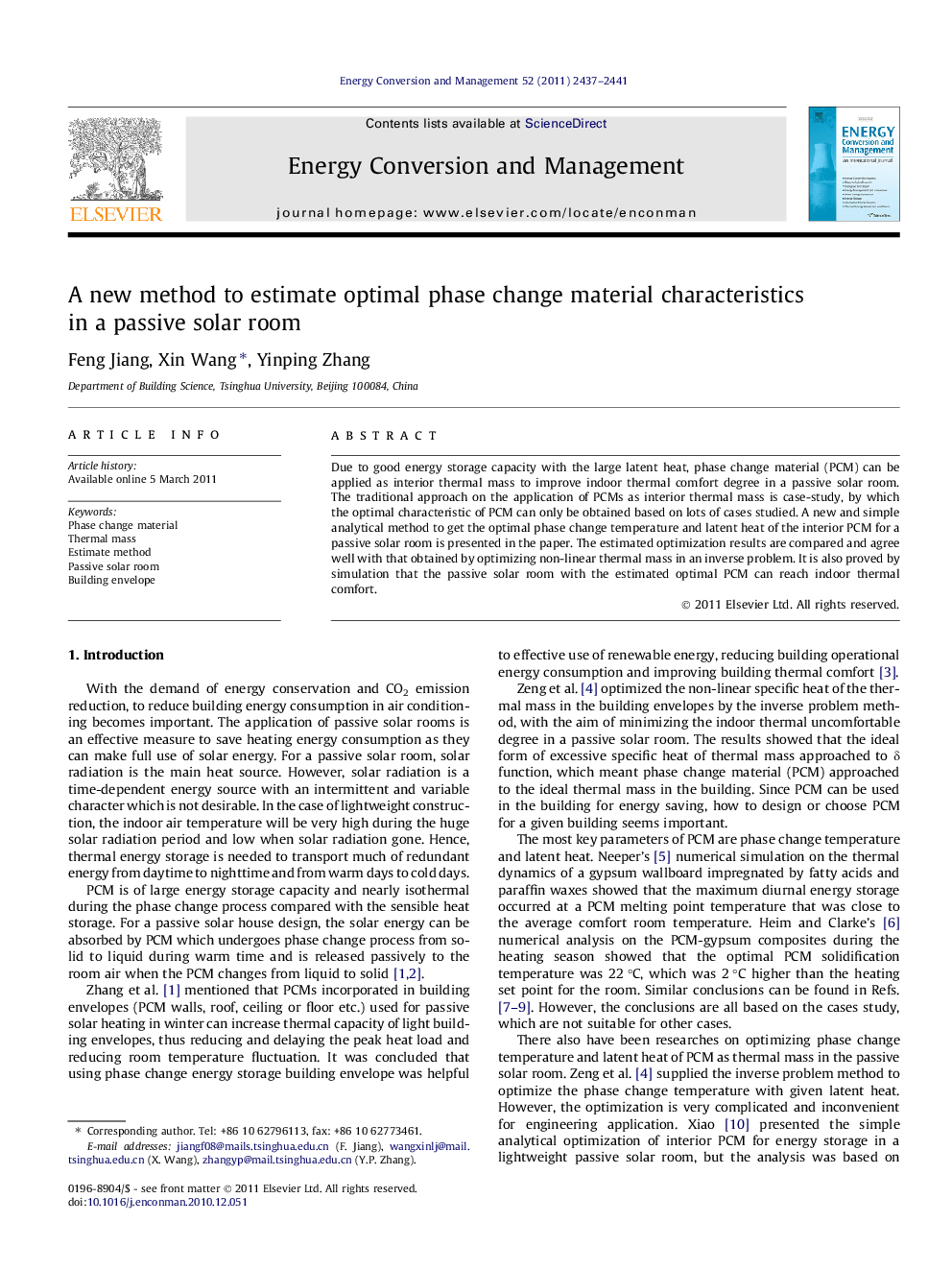| Article ID | Journal | Published Year | Pages | File Type |
|---|---|---|---|---|
| 761386 | Energy Conversion and Management | 2011 | 5 Pages |
Due to good energy storage capacity with the large latent heat, phase change material (PCM) can be applied as interior thermal mass to improve indoor thermal comfort degree in a passive solar room. The traditional approach on the application of PCMs as interior thermal mass is case-study, by which the optimal characteristic of PCM can only be obtained based on lots of cases studied. A new and simple analytical method to get the optimal phase change temperature and latent heat of the interior PCM for a passive solar room is presented in the paper. The estimated optimization results are compared and agree well with that obtained by optimizing non-linear thermal mass in an inverse problem. It is also proved by simulation that the passive solar room with the estimated optimal PCM can reach indoor thermal comfort.
Research highlights► A simple analytical method is proposed to estimate the optimal phase change temperature and latent heat of interior PCM thermal mass in a passive solar room. ► The method is applied for a typical case in Beijing, and results agree well with that obtained from complicated inverse problem solution. ► In different building climatic regions in China, optimal phase change temperatures are 1.1–3.3 °C higher than the lower limit of thermal comfort range.
